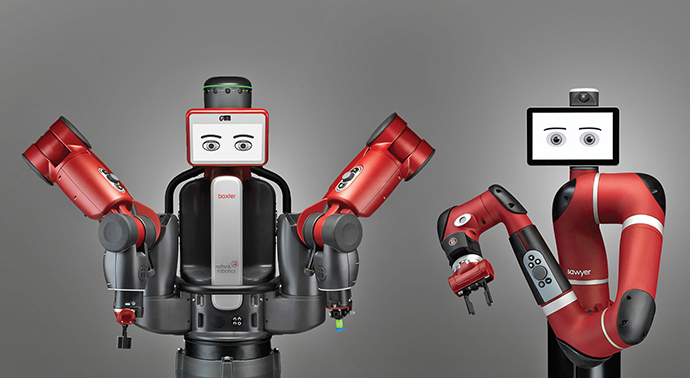New England started 2016 in style as General Electric announced the relocation of its corporate headquarters from Connecticut to Boston. Thus the “digital company that’s also an industrial company” takes advantage of the same tech-hip talent base that its popular “What’s Wrong With Owen?” ad campaign gently satirizes.
What’s wrong with going where the innovation is? As world-changing young GE employee Owen might say to his trivial-app-crazed friends, “Absolutely nothing.”
“Today, GE is a $130-billion high-tech global industrial company, one that is leading the digital transformation of industry,” said GE Chairman and CEO Jeff Immelt on January 13th. “We want to be at the center of an ecosystem that shares our aspirations. Greater Boston is home to 55 colleges and universities. Massachusetts spends more on research and development than any other region in the world, and Boston attracts a diverse, technologically fluent workforce focused on solving challenges for the world. We are excited to bring our headquarters to this dynamic and creative city.”

Rich Bryden, Director of Information Products at the Institute for Strategy and Competitiveness, designed and launched Harvard’s Cluster Mapping Project. His work with competitiveness guru Michael Porter centers on analytical methods supporting strategies for economic development. He says the GE announcement may be a big fish, but it’s just part of … pardon the pun … an entire school of them.
“That was the fifth announcement in the last 15 months,” he says, noting new business units or centers of excellence from such firms as GE Current (the company’s $1-billion “energy as a service” startup), Philips R&D, Lutron, Schneider Electric and Toyota. “It’s a cluster story for Boston, and the Internet of Things space. These are industrial companies, and not just in one industry. They realize their products are going to embed a lot of software, or software in the cloud, and are making strategic moves to where they can be connected to the innovation and talent. Philips moved their research facilities up here from Westchester [New York], which echoes the GE move, even in moving from a suburb of New York.”
Bryden references Porter ongoing series in the Harvard Business Review documenting the idea that “the Internet of Things is going to drive tremendous change in how companies need to be organized to be able to deliver these new, smart, connected products [SCPs]. One of the implications is these relocations we’re seeing — new centers of excellence, co-locating research facilities with services that are not native to the corporation.”

As Porter wrote in a January Boston Globe commentary on GE’s evolution and investment in SCPs, “GE has set an ambitious goal of being a top 10 software company by 2020, not just a manufacturing company.” He also called the new IT momentum a second major economic engine for the area, alongside life sciences.
What better place to do it than where the phrase “Internet of Things” was first coined, in 1999, at the Auto-ID Lab at MIT?
Healthy Environment
In notes he’s made on this cluster trend, Bryden writes, “Manufacturers are experiencing a growing sense of urgency about finding the right talent as their skill requirements shift from mechanical engineering to software engineering, from selling products to selling services, and from repairing products to managing product uptime.”
Philips moved its R&D center to Cambridge in May 2015, and pledged $25 million toward a research alliance with MIT. According to accounts in Fortune and elsewhere, the company’s focus on healthcare technologies makes Boston an especially good fit. Beyond that, the reasons align with GE’s: Get closer to both startups and academic brainpower, and in the process move from a secluded R&D campus (in Westchester for 67 years) to a more vibrant day-to-day dynamic.
MIT’s roots stretch far, and were crucial to Lutron’s location of an engineering office in Kendall, notes Bryden. In an email to Bryden, Lutron Co-Chairman Susan Hakkarainen, an MIT alumnus who is also the daughter of late Lutron founder Joel Spira, said the new office will be working on “cutting-edge technology in the areas of lighting control and the Internet of Things.
Schneider Electric is moving its HQ from Illinois to Andover, Mass., in order to access engineering talent. The move comes after it already had established its R&D hub there. Bryden observes that the move embodies Schneider’s “shift from a maker of traditional electrical gear to a technology outfit that manufactures sophisticated computerized electrical and environmental systems used in data centers and other buildings. The company is weaning itself off its old business of selling switches, buttons, and relays, using a series of acquisitions to aggressively pivot into the field of smart power systems” and the Internet of Things.

Toyota’s new location is an entirely new company, an R&D outfit called Toyota Research Institute (TRI) headquartered in Palo Alto, California, but with a second location near MIT. Its aim is to use artificial intelligence and big data to accelerate R&D, notes Bryden. The more you look at the company, the more it looks like it’s not just melding hardware and software, but vehicles and mobility with healthcare and well-being.
“Simply put, we believe we can significantly improve the quality of life for all people, regardless of age, with mobility products in all aspects of life,” said Gill Pratt, Toyota Executive Technical Advisor and CEO of TRI, in announcing in January a leadership team and advisory board for the company.
Already Here
Some of the startups GE wants to be near are funded by GE itself. Rethink Robotics, based near where GE’s new HQ will be, in the Seaport District, is funded by GE Ventures, Bezos Expeditions, Goldman Sachs and others.
Before its big HQ announcement, GE already employed nearly 5,000 people in Greater Boston across such areas as aviation, digital and healthcare. It first arrived in 1892 when Thomas Edison’s General Electric Co. merged with Boston’s Thomson-Houston Electric Co.
GE has been so convinced of the area’s strength that it didn’t even put out feelers when looking for places to locate its Current unit. In what may be the best testimonial of all, state and local leaders didn’t learn about the project until it already had arrived.

